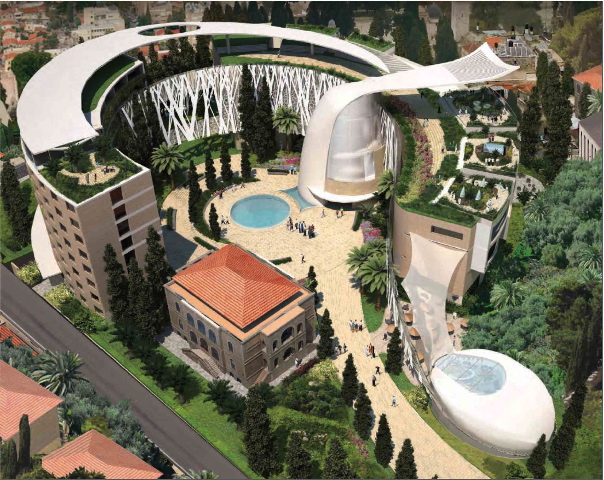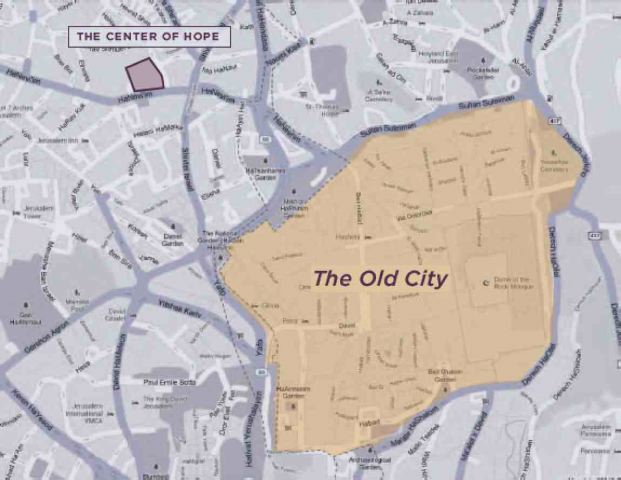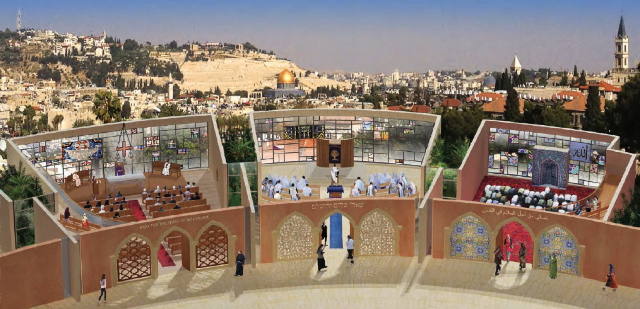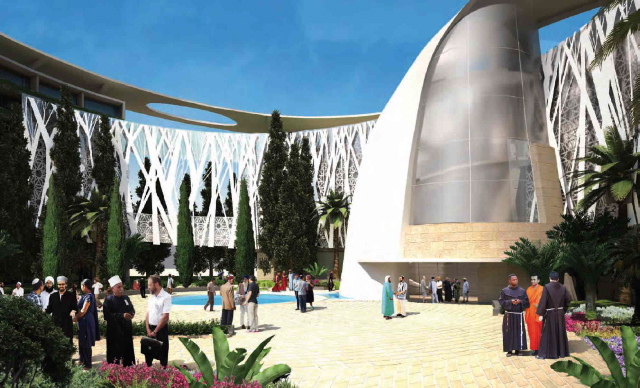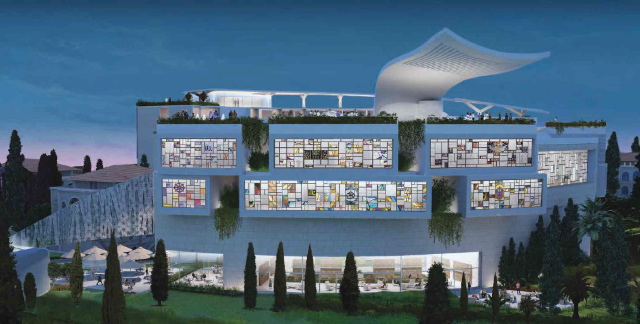The firm Lee H. Skolnick Architecture + Design Partnership has been selected to design the Center for HOPE, a new, 46,000-sf center in Jerusalem for religious education, cultural sharing and prayer among members of different faith traditions.
Like a United Nations for the religious world, the planned Center for HOPE is conceived by its backers as a place where people of all religions have a welcoming home and a place to help "bring about world-changing peace and harmony," according to The Elijah Interfaith Institute, the project's leader.
Support for the Center for HOPE has come from around the world from financial supporters as well as religious leaders including: the Dalai Lama; Cardinal Christoph Schönborn of Austria; Bhai Sahib Bhai Mohinder Singh of the U.K.; Grand Mufti Mustafa Ceric, of Bosnia; Chief Rabbi Jonathan Sacks of the U.K.; and Mata Amritanandamayi Devi of India.
According to Lee H. Skolnick, FAIA, the Center for Hope will be located on Prophets Street near Jerusalem's Old City, designed with symbolic meaning that reflects its redolent location.
"HOPE stands for 'House of Prayer and Education,' and the Center for HOPE experience is designed to unfold as a journey of peace and ascension," says Skolnick. "It is designed to provide beautiful prayer spaces, museum elements, art exhibition spaces, a library, a hospitality center, and study and lecture rooms for resident scholars."
The ribbonlike, sloping buildings curve around a verdant courtyard with reflecting pools, and feature green roofs and sustainable design elements. The mission of the new center, according to the Elijah Interfaith Institute, is as follows:
"Through prayer, education and cultural sharing, the Center of Hope seeks to bring about transformation in the lives of participants, increased understanding and appreciation between members of different faith traditions and a meaningful contribution to processes of peacemaking, community building and reconciliation between diverse faith communities in Jerusalem, thereby serving as a sign and model for religions and their possible relationships worldwide."
Related Stories
| Aug 11, 2010
10 tips for mitigating influenza in buildings
Adopting simple, common-sense measures and proper maintenance protocols can help mitigate the spread of influenza in buildings. In addition, there are system upgrades that can be performed to further mitigate risks. Trane Commercial Systems offers 10 tips to consider during the cold and flu season.
| Aug 11, 2010
IFMA announces new Religious Facilities Community of practice
The International Facility Management Association is pleased to announce the formation of the Religious Facilities Community, a new community of practice devoted to those who work as full-time, part-time or volunteer facility managers in their houses of worship. IFMA’s communities of practice are organized special interest groups that unite members of specific industries not represented by the association’s councils.
| Aug 11, 2010
AGC unveils comprehensive plan to revive the construction industry
The Associated General Contractors of America unveiled a new plan today designed to revive the nation’s construction industry. The plan, “Build Now for the Future: A Blueprint for Economic Growth,” is designed to reverse predictions that construction activity will continue to shrink through 2010, crippling broader economic growth.
| Aug 11, 2010
Report: Fraud levels fall for construction industry, but companies still losing $6.4 million on average
The global construction, engineering and infrastructure industry saw a significant decline in fraud activity with companies losing an average of $6.4 million over the last three years, according to the latest edition of the Kroll Annual Global Fraud Report, released today at the Association of Corporate Counsel’s 2009 Annual Meeting in Boston. This new figure represents less than half of last year’s amount of $14.2 million.
| Aug 11, 2010
Jacobs, HDR top BD+C's ranking of the nation's 100 largest institutional building design firms
A ranking of the Top 100 Institutional Design Firms based on Building Design+Construction's 2009 Giants 300 survey. For more Giants 300 rankings, visit http://www.BDCnetwork.com/Giants
| Aug 11, 2010
And the world's tallest building is…
At more than 2,600 feet high, the Burj Dubai (right) can still lay claim to the title of world's tallest building—although like all other super-tall buildings, its exact height will have to be recalculated now that the Council on Tall Buildings and Urban Habitat (CTBUH) announced a change to its height criteria.
| Aug 11, 2010
Divine intervention
Designed by H. H. Richardson in the 1870s to serve the city's burgeoning Back Bay neighborhood, Trinity Church in the City of Boston would come to represent the essence of the Richardsonian Romanesque style, with its clay tile roof, abundant use of polychromy, rough-faced stone, heavy arches, and massive size.


